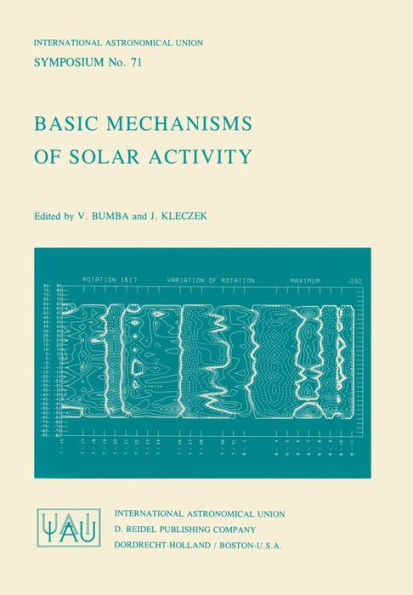Basic Mechanisms of Solar Activity
Our first attempt to organize a Symposium on solar activity was made at the lAO General Assembly in Brighton 1970. There, at the session of Commission 10, we proposed to organize a Symposium which would stress the observational aspects of solar activity. It was our hope that such a Symposium might stimulate studies of those important problems in solar physics which for a long time had been neglected in overall scientific discussion. Although a provisional date for the Symposium was then decided, it did not take place to avoid overlapping with other lAO activities. At the session of Commission 10 in Sydney -on the occasion of the XVth lAO General Assembly in 1973 -we repeated our proposal and forwarded the invitation of the Czechoslovak Academy of Sciences to organize the Symposium in Prague. Both were accepted. During the discussions about the programme of the Symposium -enthusiastically promoted by the late president of Commission 10, Prof. K. O. Kiepenheuer -it was decided to change slightly its subject. The theoreti cal problems were stressed and the majority of the Scientific Organizing Committee agreed not to deal with short-lived phenomena of the solar activity or with individual active regions. Symposium No. 71 was held in Prague from August 25 to August 29, 1975. Its Organizing Committee consisted of V. Bumba (Chairman), W. Deinzer, R. G. Giovanelli, R. Howard, K. O. Kiepenheuer, M. Kopecky, T. Krause, M. Kuperus, G.
"1117093115"
Basic Mechanisms of Solar Activity
Our first attempt to organize a Symposium on solar activity was made at the lAO General Assembly in Brighton 1970. There, at the session of Commission 10, we proposed to organize a Symposium which would stress the observational aspects of solar activity. It was our hope that such a Symposium might stimulate studies of those important problems in solar physics which for a long time had been neglected in overall scientific discussion. Although a provisional date for the Symposium was then decided, it did not take place to avoid overlapping with other lAO activities. At the session of Commission 10 in Sydney -on the occasion of the XVth lAO General Assembly in 1973 -we repeated our proposal and forwarded the invitation of the Czechoslovak Academy of Sciences to organize the Symposium in Prague. Both were accepted. During the discussions about the programme of the Symposium -enthusiastically promoted by the late president of Commission 10, Prof. K. O. Kiepenheuer -it was decided to change slightly its subject. The theoreti cal problems were stressed and the majority of the Scientific Organizing Committee agreed not to deal with short-lived phenomena of the solar activity or with individual active regions. Symposium No. 71 was held in Prague from August 25 to August 29, 1975. Its Organizing Committee consisted of V. Bumba (Chairman), W. Deinzer, R. G. Giovanelli, R. Howard, K. O. Kiepenheuer, M. Kopecky, T. Krause, M. Kuperus, G.
54.99
In Stock
5
1

Basic Mechanisms of Solar Activity
497
Basic Mechanisms of Solar Activity
497Paperback(Softcover reprint of the original 1st ed. 1976)
$54.99
54.99
In Stock

Product Details
| ISBN-13: | 9789027706812 |
|---|---|
| Publisher: | Springer Netherlands |
| Publication date: | 12/31/1976 |
| Series: | International Astronomical Union Symposia , #71 |
| Edition description: | Softcover reprint of the original 1st ed. 1976 |
| Pages: | 497 |
| Product dimensions: | 6.69(w) x 9.61(h) x 0.04(d) |
From the B&N Reads Blog
